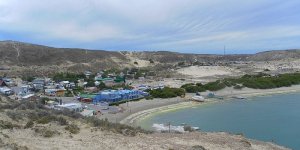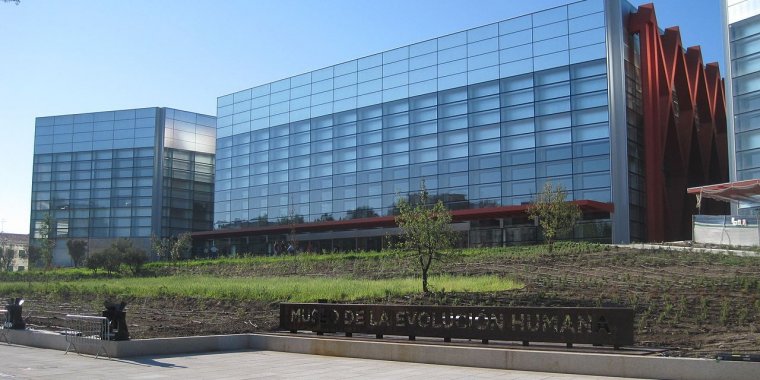| Published in Destinations |
Burgos, Spain
Burgos is 240 km north of Madrid and 160 km south of Bilbao and Santander. It is on the Castile Plateau and its average altitude is 856 m. Burgos is best known for its cathedral, that forms part of its UNESCO World Heritage designation, and for being a town on the French Route in the Way of St. James. Also it has an interesting old quarter, some ancient religious buildings, a lot of green parks, and Museum of Human Evolution.
Castilian nobleman, military leader and diplomat El Cid Campeador is a significant historical figure in the city, as he was born a couple of kilometres north of Burgos and was raised and educated here.
Get in
By plane
• Burgos-Villafria Airport (RGS). has daily flights to Barcelona. Air Nostrum, an Iberia-affiliated airline, has flights from Burgos to Albacete, Ibiza, Bolonia, Nice, and London (all via Barcelona). There you can take a taxi or a bus (L25) that costs €0.85.
• Major airports near Burgos are Madrid (240 km), Bilbao (160 km), Santander (160 km) and Valladolid (125 km). There are several connections by train or bus between these cities and Burgos. If you are arriving from Madrid you can take a bus in the Intercambiador of Avenida de America or a train in Chamartin railway station. The trip takes less than 3 hr.
By train
Burgos Rosa de Lima is the name of the railway station of the city. It is at Avenida Príncipe de Asturias. Open 24 hr, you can buy tickets there from 07:15-22:30 or online at Renfe. It's 5 km from away from the city centre but there are buses and taxis you can take. Burgos Rosa de Lima railway station offers high speed connections (Alvia) with Barcelona, Bilbao, Hendaya, Gijón, Madrid, and Vigo. Also, it has connections with other cities like Salamanca, León, Vitoria, San Sebastián and international cities such as Lisbon, Coimbra, and Paris.
By bus
Burgos is well-connected by bus to many other cities in northern Spain, and taking the bus is often faster than taking the train. The bus station is in the center of the city, next to Plaza Vega in Calle Miranda No. 4-6. You can download schedules of national and international services. Taking a bus is the best option if you want to travel to Madrid. There are several coaches during the day and the trip takes only 2hr 45 min. The company that travels to Madrid is Alsa.
By car
Burgos is between the centre and the north of Spain. Several roads cross the city and it's easy to arrive in Burgos by car.
— From Santander take Rte N623 and 627 or Hwy A231 and A67.
— From Madrid take Hwy A1.
— From Zaragoza and Cataluña take Hwy AP68. At Miranda de Ebro take Hwy AP1.
— From Portugal and Valladolid take Hwy A62.
— From France and the Basque Country take Hwy AP1.
— From Galicia and Leon take Hwy A231.
There are car rental facilities in the city.
Distances to/from Burgos: Madrid 240 km, Bilbao 156 km, Santander 154 km, Valladolid 125 km.
Get around
Walking is the best option to visit the main attractions of the city, but there are some places of interest you can take public transportation or rent a bike to get there.
By bicycle. Bicycle is a good option for visiting all attractions of the city. Burgos has a very good bicycle lane that connects several points of the town. Also there is a bicibur public rental service for bikes. The terrain is relatively flat, and riding along the rivers or in Fuentes Blancas is an easy way to see the sights.
By bus. Burgos has an extensive system of city buses, which you can ride for just 85 cents. You can buy the ticket on board.
By taxi. Official taxis are white, and have a reddish stripe on the front door. The tariff is displayed on top of the car (a 1 during daytime, a 2 at night, which become 2 and 3 on holidays such as Christmas Eve). You can take taxis from the taxi ranks all around the city.
By car. Transportation by private car in Burgos is not difficult. Although looking for a place to park in the city centre can be very time consuming unless you park in private car parks.
What to See in Burgos
• Burgos is most well known for its gothic cathedral, a stop along the Camino de Santiago and a UNESCO World Heritage Site. Construction on Burgos' Gothic Cathedral began in 1221 and spanned mainly from the 13th to 15th centuries. The west front is flanked by towers terminating in octagonal spires covered with open stonework traceries. The middle section, which serves as an entrance, has three alabaster pilasters, the intercolumnar spaces bearing panel-pictures representing the martyrdom of saints. The façade possessed ornate and fantastic surface decoration. Within the cathedral is the tomb of the Spanish hero El Cid.

Tomb of El Cid (Rodrigo Díaz conte di Bivar). ![]()
• Among the other interesting architectural structures, in the walls of the city are the famous gateway of Santa María, erected for the first entrance of the Emperor Charles V, and the arch of Fernán González.
• The Carthusian monastery, Miraflores Charterhouse (Cartuja de Miraflores) is situated about four kilometres from the historic city center. Among the treasures of the Charterhouse are the wooden statue of St. Bruno, the wooden choir stalls in the church and the tombs of King Juan II and of his spouse, Queen Isabella of Portugal, constructed of marble and with their recumbent effigies sculpted in alabaster.
• Minor notable churches are San Esteban, San Gil (Sancti Aegidii), San Pedro, San Cosme y San Damián, Santiago (Sancti Jacobi), San Lorenzo and San Lesmes (Adelelmi).
• The Convento de la Merced, occupied by the Jesuits, and the Hospital del Rey are also of historic and architectural interest.
• You can also visit La casa del Cordón, which was the residence of the Catholic Kings in Castille.
• The Monasterio de las Huelgas Reales (Monastery of the Royal Retreats) on the outskirts of the city, was founded in 1180 by king Alfonso VIII, and was begun in a pre-Gothic style, although almost every style has been introduced over many additions.

Monasterio de Sta. María la Real de Las Huelgas. ![]()
• Book Museum. Between the Main Square "Plaza Mayor" and the Promenade of the Espolón "Paseo del Espolón," on the side street, Travesía del Mercado nº3, you find the Fadrique de Basilea Book Museum "Museo del Libro Fadrique de Basilea", of the Burgos publisher, Siloé, a cosy museum that shows the history of the book from its first written form to its modern electronic form.
• Museum of Burgos. The museum is located in the renaissances palaces, the House of Íñigo Angulo and the House of Miranda, which has a main patio that structures the museum.
• Museum of Human Evolution. Its foundation is based on the archeological site of Atapuerca located 20 km (12 mi) east of Burgos. The Atapuerca site has been designated a UNESCO World Heritage Site. It contains several caves, where fossils and stone tools of the earliest known hominids in West Europe have been found, near Atapuerca Mountains.
What to Do in Burgos
Most of the parks in the city of Burgos can be found along the river Arlanzón. Indeed, the banks of the river itself constitute a green corridor along the city. In total, there are nearly 3 square miles (1,878 acres) of parks in Burgos and one tree for every 3 inhabitants.
• Parque del Castillo (or the Castle Park) is one of the lungs of the city.
• Fuentes Blancas is Burgos' most visited large park extending east from the city along the river Arlanzón. It contains a network of walking and biking paths and includes camping and various outdoor recreational activities.
• Paseo del Espolón is the tree-lined promenade that is the most emblematic of Burgos. It's situated along the banks of the river Arlanzón, and consists of a landscaped walk that goes from the theater square to the Arc de Santa Maria, passing shops and cafes. It's a popular social spot for residents during the warm summer months.
• Paseo de la Isla is another one of Burgos' beautiful tree-lined garden walks. It passes by the Palacio de la Isla which served as one of Franco's headquarters during the Spanish Civil War and is currently the Language Institute of Castilian and Leonese.
• Parque de El Parral is located at the old "Hospital del Rey", a former hospital for pilgrims of the "Way of Saint James", now part of the University of Burgos campus.
Restaurants
• Cobo Vintage, Calle Merced, 19. Cantabrian influenced dishes.
Hotels and Hostels
• Hotel Cordon, La Puebla, 6. In the centre of Burgos, only a couple of minutes away from the Cathedral and the Museum of Evolution and right next door to the historical House of the Cordon.
• Hotel Rice, Avda Reyes Católicos 30. Four star hotel.
• NH Palacio de la Merced, Calle de la Merced, 13. The hotel is in the heart of the city, on the banks of the River Arlanzón, overlooking the cathedral, the Arco de Santa María and the Paseo del Espolón.
Go next
Spain's extensive bus system makes it easy to take day trips from Burgos to other northern Spanish cities. Fun trips include Bilbao, Santander, Soria, Logrono, Madrid, Valladolid, and San Sebastian. (Wikivoyage, Wikipedia)
See also Burgos in Pictures.
YOU MAY ALSO LIKE





 If you own or manage a travel-related business such as a hotel, a bed-and-breakfast, a restaurant, a pub or a cafeteria, you can create a web page for your business for free on Titi Tudorancea Travel Info. » |






